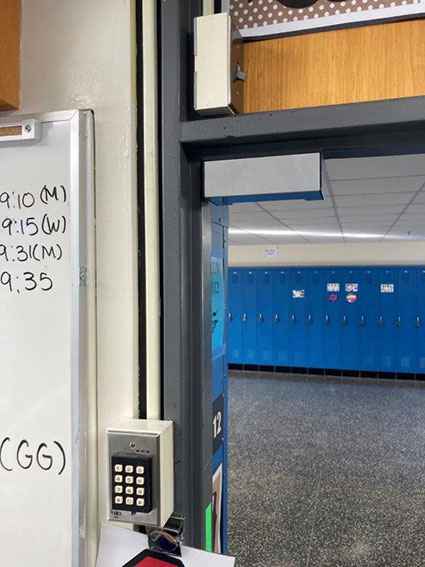Forrest Williams – School Inspections Supervisor
Minnesota State Fire Marshal Division
Technology enables doors to be electronically controlled from either the access-side, egress-side, or both. However in the vast majority of cases these systems cannot be used to prevent, inhibit or otherwise deter the use of a required egress door. Both the Minnesota State Fire Code (MSFC) and Minnesota Building Code (MBC) regulate when, where and under what conditions these systems can be used to ensure free egress.
There are generally four types of door control systems allowed under code; access-control systems are the most common. The two listed below are access-control systems that utilize an electromagnetic lock to secure a door and regulate who can access a building, room or space using a keypad, keycard or a remote “buzz-in" switch. Certain safeguards are necessary in order to maintain free egress for occupants because an energized mag-lock secures the door from both the access side and egress side.

The image shows an improper use of a controlled egress system to secure a classroom door from the egress side. The mag-lock, which releases the door once the correct passcode is entered, can be seen in the upper-left corner of the door frame.
Our inspectors occasionally come across an electromagnetic lock being used on a special education or day-care classroom door to prevent occupants from leaving the room. In such cases the egress side of the door can only be unlocked with the use of a keycard or access code. This is not allowed under code. These types of systems, called “controlled egress" doors, can only be used in institutional occupancies, in certain residential care settings, and where approved in Setting 4 special education facilities. Otherwise, all occupants -- no matter their age or level of disability -- must have free and uninhibited access to a building's egress systems and those cannot be locked within a building, room or space.
Delayed egress doors
But that's not to say these programs are left without options. Another type of door system, called “delayed egress," can be used in schools, child-care centers and several other occupancies, but only in locations where the means of egress doesn't serve an assembly-use area. This type of system delays the release of an egress door for 15 seconds. There are several other provisions including the use of delayed egress requires the entire building to be equipped with an automatic sprinkler system or have a fire alarm system that includes corridor smoke detection. For complete information on delayed egress doors see MSFC/MBC Section 1010.1.9.8.
The 2020 Minnesota State Fire Code, in addition to other adopted building and construction codes, can be viewed online at the International Code Council (ICC) website here.

